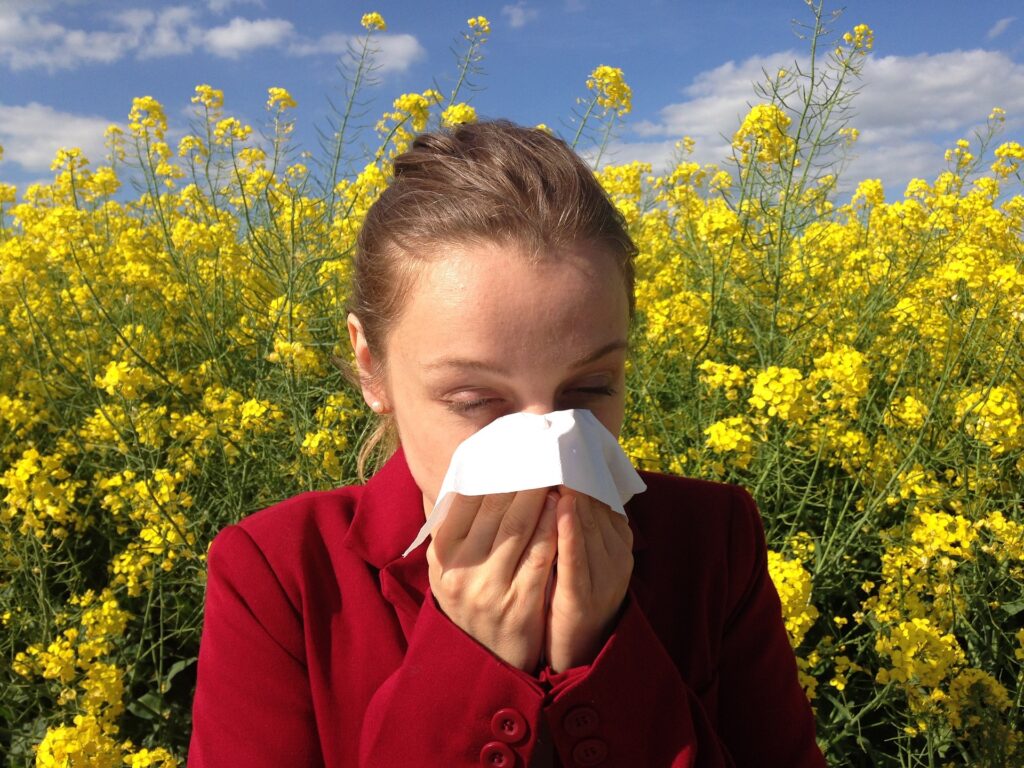
Home remedy for red eyes due to allergies. Do you know all of the unpleasant signs of allergies? If you are one of the millions of allergy sufferers, this list of symptoms should look all too familiar to you:
• sneezing
• Congestion
• Runny nose
• Sore throat
• Itchy, burning, and watery eyes
The most irritating symptom on this list is often the last one – the red, crying, burning eyes that are often due to exposure to an allergen. A home remedy for red eyes due to allergies guide can help.
Home remedies for burning eyes from allergies
It can be embarrassing to start “crying” in front of a new friend because of your allergies – but the truth is, this may not be the worst thing eye allergies have in store. The tears that make makeup or pride to run can cause other concerns.
The blurred vision associated with tears or mucus from irritated eyes can make you a road safety hazard. In some of the most severe cases, there is a chance that eye allergies could permanently compromise your eyesight.
The itchy, burning sensation that makes your eyes water shouldn’t be confused with the tears caused by allergic sinus pressure. When your head feels “cluttered”, the pressure sometimes affects the almond-sized glands above your eyes that produce tears.
This pressure causes your eyes to start flowing. Eye allergies are very different from tears caused by sinus pressure. People with eye allergies will also experience redness and irritation, often described as a burning sensation, itching, or tiredness.
So how can you be sure that you have an eye allergy? If you have this condition, what can you do to contain the burning and tears? The information in the article should give you a decent fighting chance when it comes to overcoming eye allergies.
Home remedies for eye irritation
Eye allergy also called ocular allergy affects the thin tissue (known as the conjunctiva) that covers the white part of the eye, as well as the inside of the eyelids. This fabric acts as a barrier to protect your eyes from invading particles, microbes, and other debris. Before we look at the home remedies for eye irritation, we have to understand how the whole thing happens.
Another actor in eye allergies is the lacrimal gland. Tears are not just made of water – they even contain important immune defense substances such as immunoglobulin (antibodies), lymphocytes (specialized white blood cells) and enzymes.
When airborne allergens collide with your eyes, it sets off an allergic reaction in the conjunctiva that causes itching and burning, red color, and puffiness.
As soon as the eye is irritated from contact with pollen or animal hair or some other allergy trigger, your lacrimal glands do their best to flush the offensive allergen out of your eyes. This attempt to flush irritants from the eye causes tears to flood your eyes. The irony of eye allergies is that your body is trying to protect you – but you mistakenly feel unhappy!
How are eye allergies different from other allergies?
Eye allergies are quite the same as any other type of allergy. The tissue that makes up the allergy-sensitive areas of your eyes is very similar to the tissue in your nose and throat.
Eye allergies often coexist with other allergic conditions such as hay fever (nose allergies) and even eczema (skin allergies). The biggest difference between eye allergies and any other type of allergy is how the allergen comes into contact with you.
Allergens can get into your eyes in a number of ways:
• Airborne allergens can get into the eyes simply by walking into an area where the source of the allergen is located
• Allergens also often get into your eyes simply by rubbing or touching the eye area with your hands. Sometimes just the fact of rubbing your eyes after they start burning causes more allergens to spread into the area.
Nasal allergies are almost always caused by inhaling allergens in the air, such as pollen or animal hair. People with allergic eyes often have a strong family or personal history of allergies – and will most likely experience eye allergy symptoms before the age of 30.
Two common types of eye allergies:
• Seasonal allergic conjunctivitis (SAC)
• Perennial allergic conjunctivitis (PAC)
The main difference between these two common forms of eye allergy is their timing.
You have seasonal allergic conjunctivitis (PAC) if you:
1. Usually experience symptoms for a short period of time.
2. You are annoyed by spring tree pollen or by grass pollen in summer or by weed pollen in autumn.
3. Generally, you have a period during the year when your symptoms go away completely – usually this occurs in winter.
You have perennial allergic conjunctivitis (PAC) if you:
1. Have symptoms that last year round.
2. You are bothered by indoor allergens such as dust mites, cockroaches and pet dander
3. Find out that seasonal outdoor allergies, if you are also sensitive to them, make your eye allergies worse.
Here are some common eye allergen triggers:
• pollen
• Grass
• weeds
• Dust
• Animal hair or flakes of skin
• Some medicines or cosmetics
There are also some elements that are irritating to the eyes but are not considered allergens:
• cigarette smoke
• Perfume
• Diesel exhaust

Symptoms of eye allergies:
• Redness
• Tear
• Burning sensation
• Blurred vision
• Swelling of the eye
When should you seek medical help?
Some people find it easy to pinpoint the exact cause of their allergies and avoid the triggers entirely, (i.e allergic to pets, etc.) however, if you cannot identify the cause of your reactions or simply cannot avoid contact, you should consult an ophthalmologist (a doctor specialized in eye diseases and eye care).
If you have SAC, make an appointment with your ophthalmologist ahead of the season when your eye allergies flare up. That way, you can start some kind of treatment or prevention program before you feel any symptoms.
If you have PAC, you may want to routinely schedule appointments with your ophthalmologist to make sure your eye allergies are monitored. Occasional relapses make it necessary to keep your ophthalmologist informed of your condition. You can also consult an allergist (a doctor who specializes in allergic conditions such as nasal allergies and allergic asthma).
Important questions to ask your doctor:
1. Is there a specific cause for my eye allergies? Can it be identified?
2. How can I reduce my symptoms or control occasional relapses?
These are two important questions to help you determine whether it is better to avoid contact with your triggering allergen or find treatment to relieve the irritation.
Testing and treatment
The best way to determine whether or not you have an eye allergy is to see your ophthalmologist. A doctor can review the symptoms usually associated with the condition. In most cases, a special microscope called a stilt lamp is used for this.
When examining the eyes with the stilt lamp, the ophthalmologist looks for enlarged blood vessels, conjunctival swellings and eyelid swellings. These are all the usual signs of an allergic reaction in the eye and surrounding tissues.
In rare cases, the ophthalmologist will carefully scrape the surface of the conjunctiva. The goal is to check tiny cells that have been removed for traces of eosinophils. Eosinophils are cells that are often attached to severe allergy cases.
There is a list of over-the-counter and prescription medications for people with mild to moderate eye allergies. Most drugs are available in the form of eye drops, which are usually an effective treatment and have little or no systemic side effects. Most drops are only used twice a day. Some of the most commonly prescribed brands are:
• Nedocromil (Alocril)
• Ketotifen (Zaditor)
• Olopatadine (Patanol)
• Azelastine (Optivar)
• Pemirolast (Alamast)
• Epinastine (Elestat)
In more severe cases, your eye doctor may recommend the use of a topical ophthalmic corticosteroid. Older forms of corticosteroids can have side effects if used for long periods of time.
The newer forms of corticosteroids are associated with a much lower risk. Some of the most common brands of topical ophthalmic corticosteroids are:
• Loteprednol 0.02% (Alrex)
• Loteprednol 0.05% (Lotemax)
• Prednisolone (AK-Pred)
• Rimexolone (Vexol)
• Medryson (HMS)
• Fluorometholone (FML, FML Forte, FML Liquifilm)
Home Care
Whether you’re making an appointment with your eye doctor or you decide you may suffer from the brief seasonal flare-ups, here are some tips to make life easier for you.
To facilitate allergic reactions at home:
1. Don’t rub your eyes. This is the most natural response to the itchiness you may feel in your eyes, but rubbing your eyes will add to the irritation. Plus, hand-to-eye contact can actually bring more allergens into your eyes. Remember: Do not rub your eyes during an allergic reaction as it will actually cause more irritation.
2. Splash your face with water if you feel your eyes getting itchy. The water will actually help flush allergens off your face and eyes.
3. If you feel that you have come into contact with allergens or your eyes are stinging, use artificial tears /use drops to rinse allergens out of your eyes.
4. Apply cold compress to your eyes to reduce swelling and irritation caused by the known allergic reaction.
If you liked the article, please donate!
Article Source: http://EzineArticles.com/3157611
